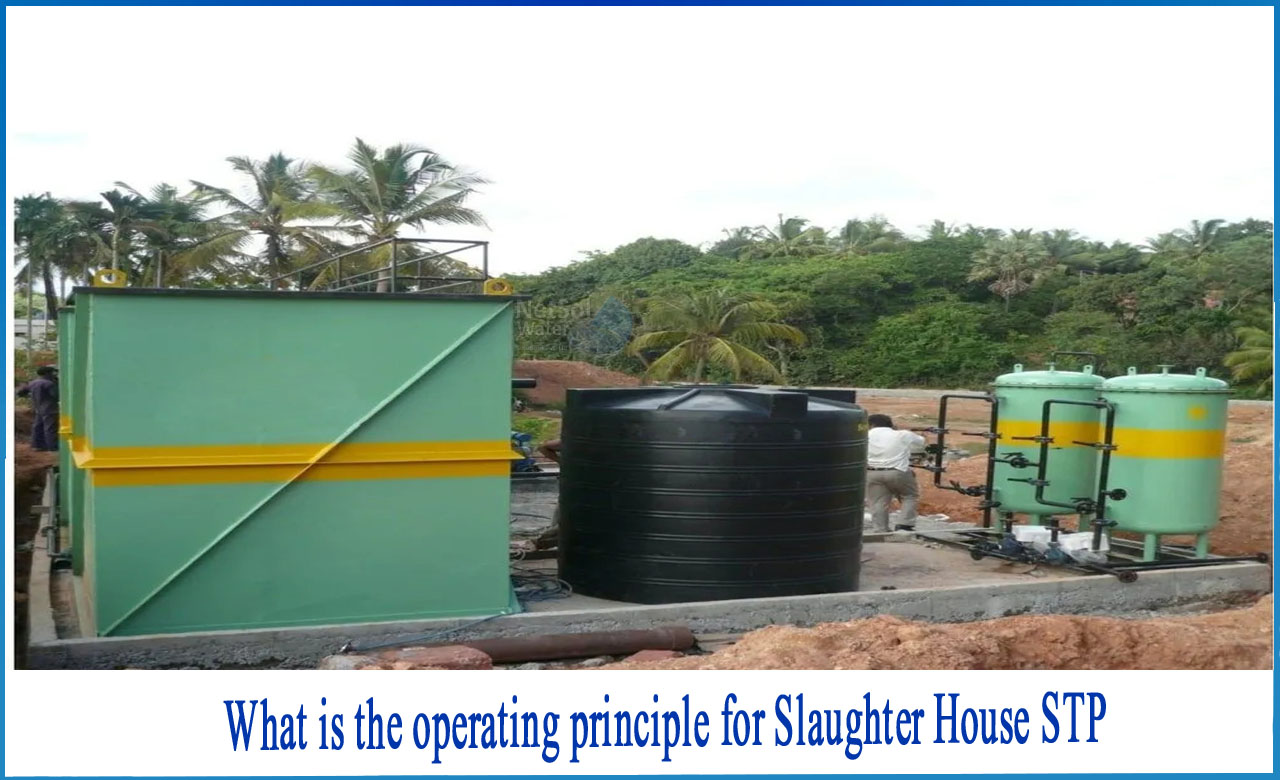What is the operating principle for Slaughter house STP?
Due to the high level of organics and nutrients, slaughterhouse wastewater (SWW) requires extensive treatment in order to be discharged to the environment in a sustainable and safe manner. As a result, SWW treatment and disposal are a public health necessity.
While the slaughter houses are under the Ministry of Agriculture's animal husbandry division for the purpose of funding expansion and modernization initiatives, the slaughter houses' day-to-day operation and upkeep are primarily the responsibility of the respective municipal bodies.
Characteristics of Slaughterhouse Waste Water
Because of the SWW complex composition of lipids, proteins, fibers, high organic content, microorganisms, and medications for veterinary purposes, meat processing effluents are deemed toxic worldwide. Biochemical oxygen demand (BOD), chemical oxygen demand (COD), total organic carbon (TOC), total nitrogen (TN), total phosphorus (TP), and total suspended solids (TSS) are all abundant in SWW. As a result, the choice of a treatment method is influenced by the properties of the SWW to be treated, the best available technology that is economically feasible, and the regulatory compliance in various political jurisdictions.
Operating principle for Slaughterhouse Wastewater
Chemically, the wastes from slaughterhouses and packaging plants are identical to home sewage, although they are far more concentrated. They are virtually entirely organic, consisting primarily of dissolved and suspended matter. De-oxygenation is the primary negative consequence of these wastes on streams and water courses.
Although physical, chemical, and biological treatment can all be used to degrade SWWs, each treatment method has its own set of benefits and downsides, which vary depending on the SWW's properties, best available technology, locations, and regulations. Because the pollution loads produced from the type and number of animals slaughtered vary across the meat sector, SWWs are normally measured using bulk metrics. As a result, treating and disinfecting slaughterhouse effluents on-site using a combination of techniques would be the best option for safely discharging them into receiving waters.
The sewage treatment system for rural slaughterhouses is separated into two parts: anaerobic and aerobic.
When the system is turned on, microorganisms must be injected, which can be obtained from the anaerobic digester of the running anaerobic digested sludge, particularly the sewage treatment plant's anaerobic biogas. The inoculum is dehydrated and carried back to the wastewater, where it is diluted to a moisture content of 96 percent before being submerged in the cooking tank and filtered. The upper part of the sedimentation sludge is removed once it has settled and been filtered. The production rate is lower than sludge due to the conversion of organic matter into biogas during the anaerobic treatment process. After treatment, activated sludge, granular fertilizer, or fertilizer should be applied.
What can we offer?
Netsol Water, as water and wastewater treatment experts, can help you with water reuse and conservation in your operations, as well as the optimization of existing water production and the design and building of new, energy-efficient, and environmentally friendly water treatment systems like Sewage Treatment Plants. Our products and solutions can provide the water your plant requires at every stage!




